Having read Should Neighbourhood Snakes be Conserved? from @gentleshaid, you can read our conversations from the post linked above
In short, I may not able to spare one, because of ophidiophobia in me, having replied him, I thought about it several times if truly, there are snakes that pose no fatal threat to human being and that lead to the compilation of today's interesting topic Venomous snake with no fatal threat to humans
Tentacled snake (Erpeton tentaculatum)
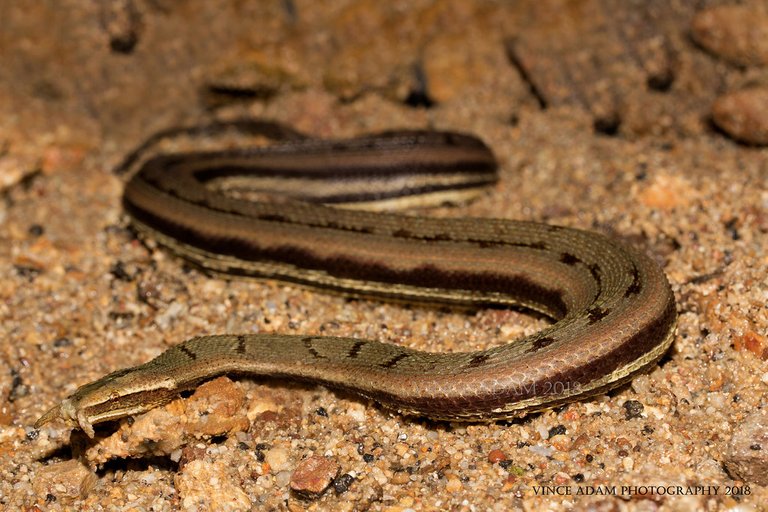
Tentacled snake is one of the quite unique species of aquatic snakes, and known to be the last surviving specie of its genius. It is usually found in southeastern Asia. Its most notable feature are strange scaly, fleshy tentacles on its snout.
The tentacles present in Tentacled snake have been proved to be super sensitive to its environment, and this allow the snake to detect any movement in the water and strike at any unfortunate fish that swims along its path.
An attack speed is also another interesting trait in Tentacle snake, it only takes 15 milliseconds for the snake to overtake and capture its prey. Naturally, fish have incredible reflexes, thus, a fast strike may not be enough at times, consequently, tentacle snake uses a more clever trick to lure fish swim towards danger zone.
Whenever the fish is nearby to the snake , the snake slightly ripple its body towards the fish. consequently, The lured fish will immediately darts in the opposite direction, as expected by the tentacle snake, it quickly angles its head so that the fish can swim directly towards its already set jaws.
Out of all snake, tentacle snake is the only one known to anticipate the reaction of its prey and act accordingly, Tentacled snake is venomous, but it poses no fatal threat to humans.
Long nosed vine snake (Ahaetulla nasuta)
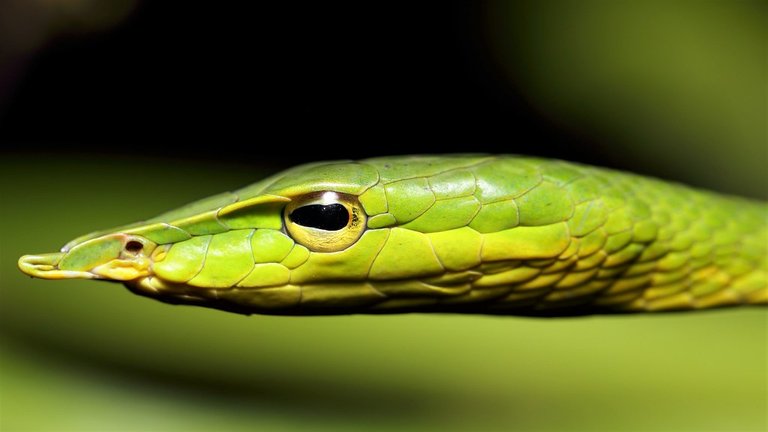
Long nosed vine snake can be found in southeastern Asia, this type of snake is highly advanced arboreal predator; unlike other snakes, it has excellent binocular vision which allows it to strike at prey with great accuracy.
Long nosed vine snake's eyes are very unusual, in the sense that it is horizontal in nature, key hole shaped pupils. Its vine like body hides the snake from both prey and predators . Just like its body, its tongue is also bright green in color. Its light weight allows it to quickly move through the foliage and even reach from one branch to another with almost half of its body on the air.
They feed mostly on frogs and lizards. Just like Tentacle snake, Long nosed vine snake is also venomous but poses no fatal threat to humans, except swelling and pain which are both its only symptoms in case it bites. However, the symptoms usually disappears after few days.
Langaha Nasuta
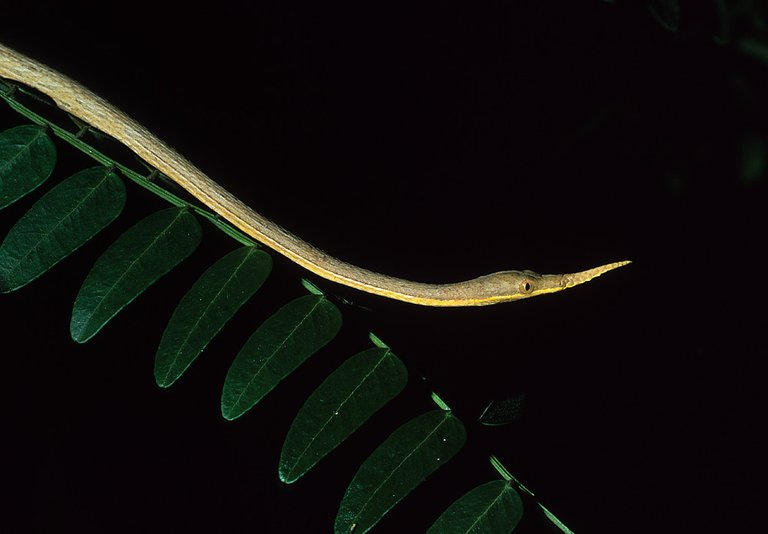
Langaha Nasuta is usually found only in Madagascar endangered rain forests, it belongs to one of the weirdest reptiles in the world, it is also referred to as leaf -nosed snake, it is adapted to arboreal lifestyle and feed mostly on lizards. Its most Interesting trait is the weird horn, this weird horn is common to both sex of Langaha Nasuta even though they are different from each other, for instance, male langaha are known to be yellowish in color with smooth skin and a very sharp, pointed horn while female langaha were observed to have rough looking brown scales and a flat, leaf shaped and serrated horn. Langaha Nasuta is one of the few snakes where the gender type can easily be determined at first sight, it is venomous but not life threatening, although its byte may cause serious injury to one's health.
Horned viper
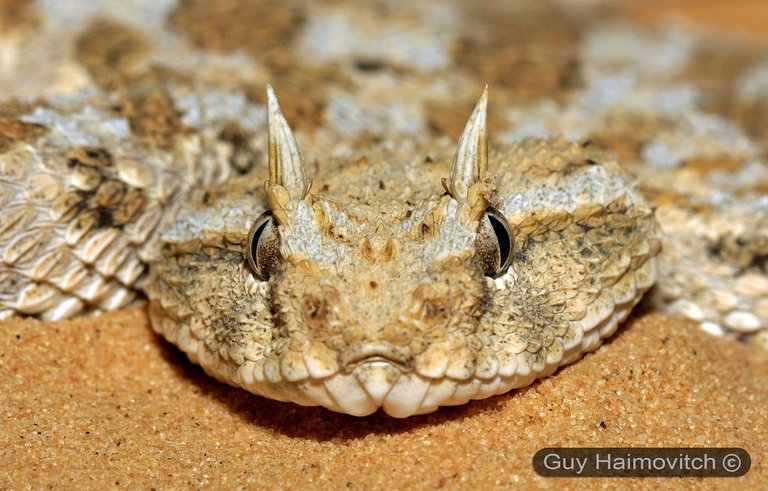
Horned viper is usually found in the deserts of Northern Africa and the Middle East, horned vipers are small, usually under 50cms long. They often have a pair horns over the eyes, but there are also some individuals that lack them completely, as such it can easily be mistaken for other vipers. They are also venomous but their byte is also non fatal to human being. When threatened, they rub their colls together to produce a warning sound before they strike. The horned viper hunts by hiding under the sand leaving only its horns, eyes and nose exposed, thereby striking at any small animal such as rodents and lizards that is close-by.
Flying snake (Chrysopelea)
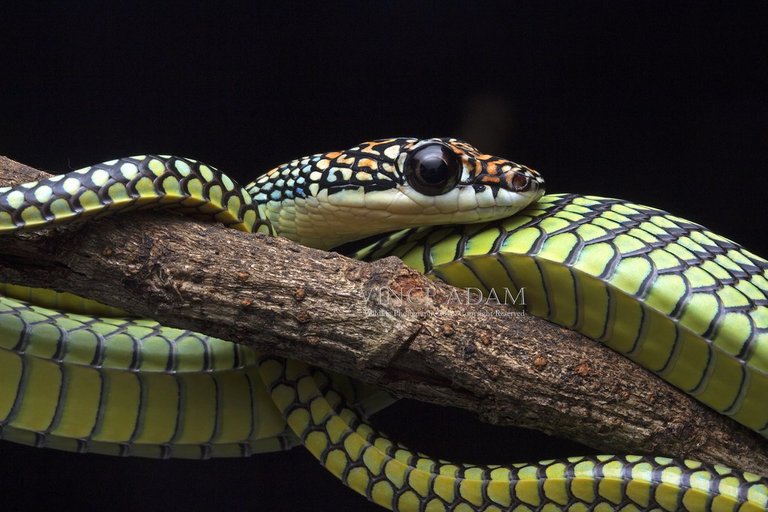
Flying snakes are usually found in rain forests of India and southeastern Asia, despite their flying name, investigations revealed that Flying snakes is fly less, however, they are accomplished gliders. Flying snakes can glide up to 100 meters or more and they can actually slither in mid air which gives them better stability and some degree of control over their flight. Flying snakes are mildly venomous like the aforementioned snakes but pose no threat to humans. They feed mostly on lizards and other small animals and most of their time up trees.

Having studied some of the venomous snakes that pose no fatal threat to humans, may be the ophidiophobia in me will be reducing gradually, although, some of these snakes are not found here in Nigeria.
Thanks for reading through and I hope this will also help some one out there, especially against ophidiophobia.

